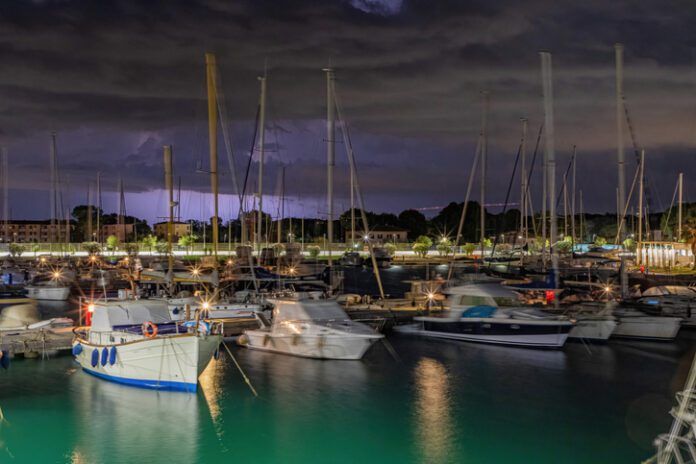Most boat owners have only the vaguest idea of what is involved in protecting their boats from lightning damage. Many believe that their boats are already protected by the boat’s grounding system. Most are wrong.
Just because your boat may be bonded with heavy copper conductors connecting the masses of metal in the boat doesn’t mean that it is protected against lightning. A bonding system may be a part of a lightning protection system, but bonding itself offers no protection to the boat unless a good, direct path to ground is part of the system.
The purpose of bonding is to tie underwater metal masses in the boat together to reduce the possibility of galvanic corrosion caused by dissimilar metals immersed in an electrolyte. The purpose of lightning grounding is to get the massive electrical charge of a lightning strikethrough the boat to ground with the least possible amount of resistance.
Most lightning never reaches the earth: it is dispersed between clouds of different electrical potential. The lightning that concerns sailors is the discharge of electricity between a cloud and the surface of the earth, or an object on the surface of the earth, namely, your boat. The amount of electricity involved in lightning can be, well, astronomical. We’re talking about millions of volts.
Granted, the duration of a lightning strike is extremely short. But in the fraction of a second it takes for lightning to pass through your boat to ground, a great deal of damage can be done. And here’s the kicker. No matter how elaborate your lightning protection system, there is no guarantee that a lightning strike will not damage your boat.
Certainly you can reduce the potential damage from a lightning strike. That’s what protection is all about. But to think you can eliminate the possibility of damage is folly. There are too many recorded instances of so-called properly lightning-protected boats suffering damage to believe in the infallibility of lightning protection systems.
For more information on how to best protect your boat from lightning strikes, purchase Nigel Calder’s Boatowner’s Mechanical & Electrical Manual from Practical Sailor.






































